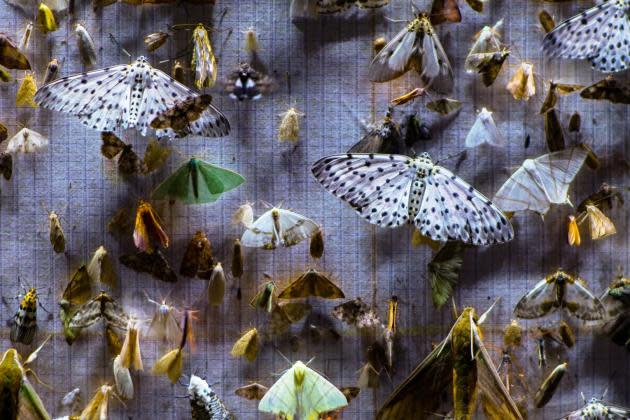‘Nocturnes’ Review: A Hypnotic Documentary About Moths Unfolds to Reveal Climate Change Concerns As Well

The nature documentary is inherently preservationist, but Anirban Dutta and Anupama Srinivasan’s “Nocturnes” offers environmental persuasions not through verbal arguments, or even an aesthetic appreciation. Rather, its meditative, hyper-fixated approach to process — as seen through the eyes of seasoned lepidopterists — proves so hypnotic that any appeals or augments the movie makes are deeply felt before they’re intellectually understood. The pieces snap into place eventually (which is to say, the “why” of studying moths and their patterns), but the “how” is foregrounded so forcefully and poetically throughout that viewers will likely come to care about these creatures, and this field of study, well before they understand the very real and pressing reasons they should.
In northeastern India, bordering Bhutan, scientist Mansi and her indigenous assistant Bicki (belonging to the local Bugun tribe) partake in the nightly ritual of suspending a cloth sheet and illuminating it with bright lights in the middle of the forest. Slowly, but surely, hundreds of moths flock to this makeshift station, resting along the sheet’s checkered grid pattern so Mansi can observe, photograph, and eventually measure them.
More from Variety
Between her frequent voiceover and her instructions to Bicki, the audience learns a great deal about Mansi’s practice. We even meet an elderly man who appears to be her mentor, hinting at the depth of this scientific tradition, though there’s something intentionally stilted about her delivery. Mansi is not an actor, after all, but she’s given the role of one, both in her narrations, as well as in some of these interpersonal conversations. These appear to be staged for the camera, but contain thoughtful discussions and nuggets of truth, despite this docu-fictional appearance, and with the help of Nainita Desai’s heavy, wistful score, they become, in their own way, melodic.
However, more than via any of Mansi’s words, the movie’s arguments are made through images, silences and the sounds of nature. Fluttering wings and the echoes of trilling insects make up much of the serene soundscape, whether during close-ups of the moths — their texture, their patterns, their vibrating movements when they sit still are all intriguing to observe — or during wide shots of the scientists’ setup glowing in the darkened forest, drawing us toward it, not unlike the moths themselves.
These nighttime scenes are provided with ingenious contrast during intervening mornings, made up largely of establishing shots of green mountainsides and nearby communities, captured from afar. Cinematographer Satya Rai Nagpaul films these clarifying scenes through morning fog, giving them an ethereal quality as morning prayers ring out like harmonized insect hums, but the camera rarely approaches human beings or settlements.
Instead, it observes from a distance, as though it were performing an anthropological study too, and in the process, it creates intrinsic aesthetic connections between the lives of people and the lives of moths, hidden away from us, in ways we need to lean forward to observe and understand. Long before Mansi delivers a lecture on the specifics of her studies and their overlap with global climate change, the moths feel monumentally important, and deeply connected to us.
Dutta and Srinivasan have effectively reverse-engineered an aesthetic approach from the basic concept at the heart of these entomologic studies, with sheets painted in light as the central object of allure for the moths, and for the audience. Humans have been around a mere fraction of the time that moths have — despite their individual life spans of less than a week — and for an even smaller portion of our existence, light projected onto fabric at 24 frames per second has monopolized our collective attention. “Nocturnes” takes full advantage of this for an altruistic cause, resulting in a documentary that is immediately, powerfully, and above all cinematically convincing.
Best of Variety
Sign up for Variety’s Newsletter. For the latest news, follow us on Facebook, Twitter, and Instagram.

 Yahoo News
Yahoo News 